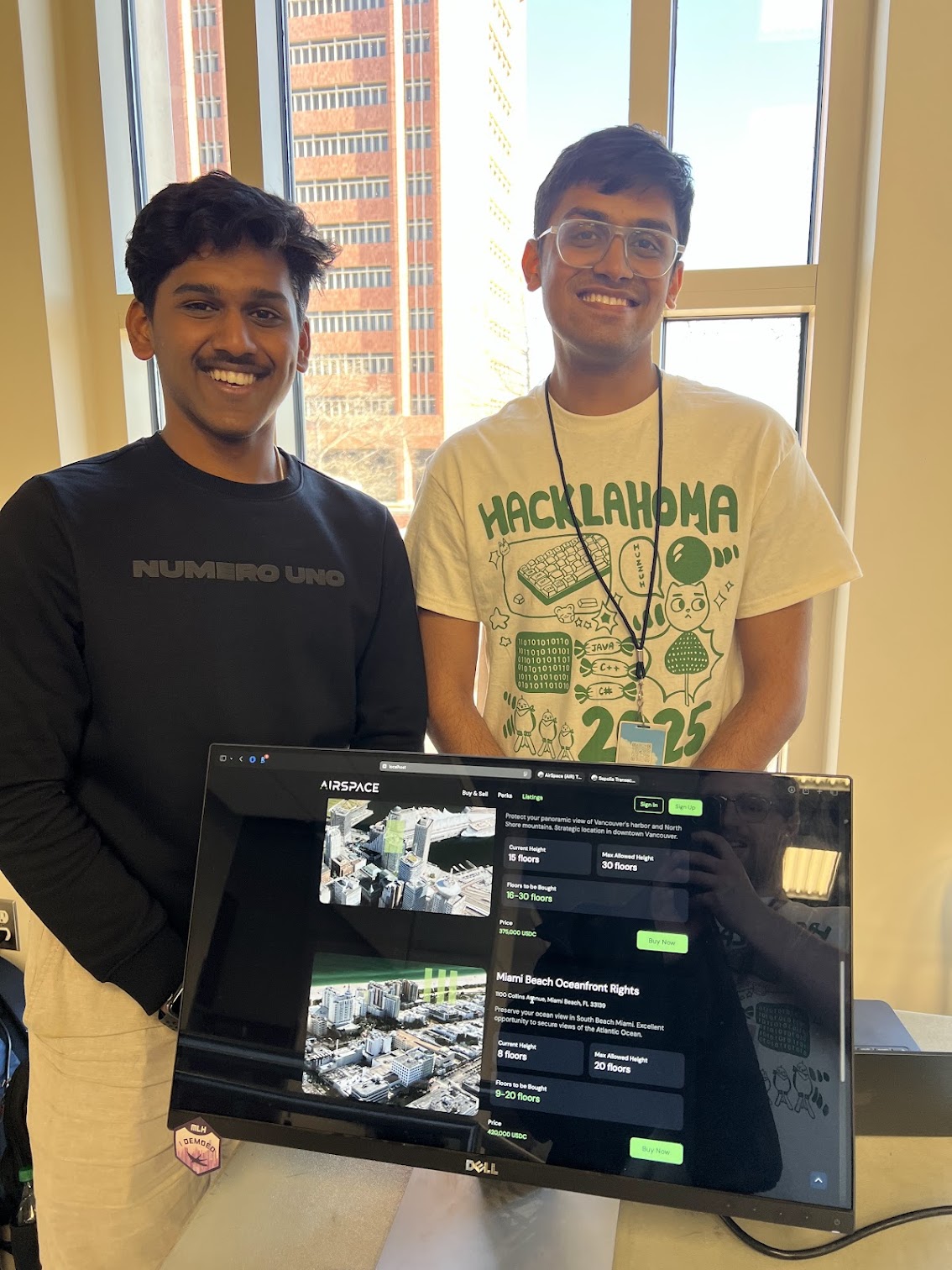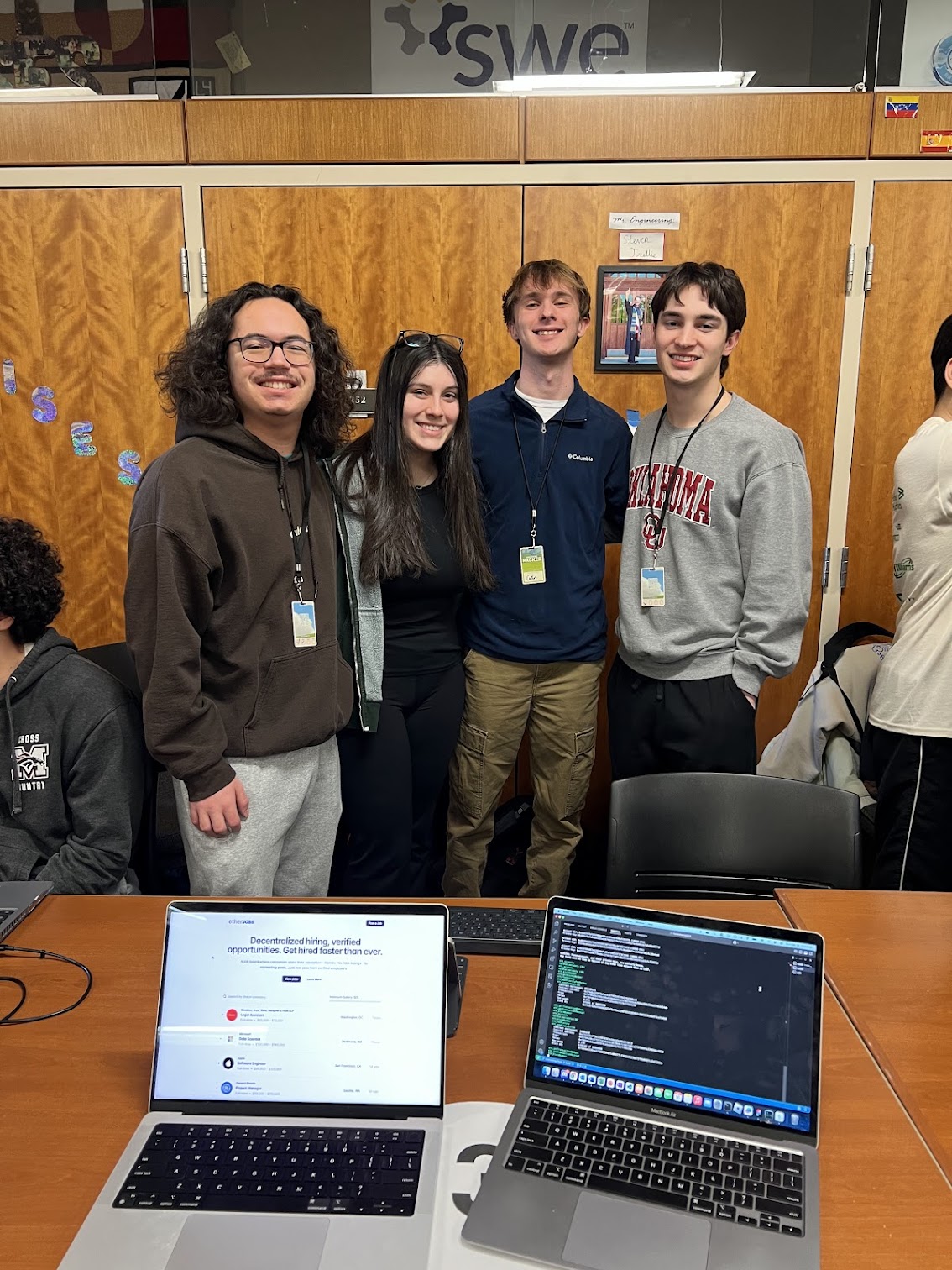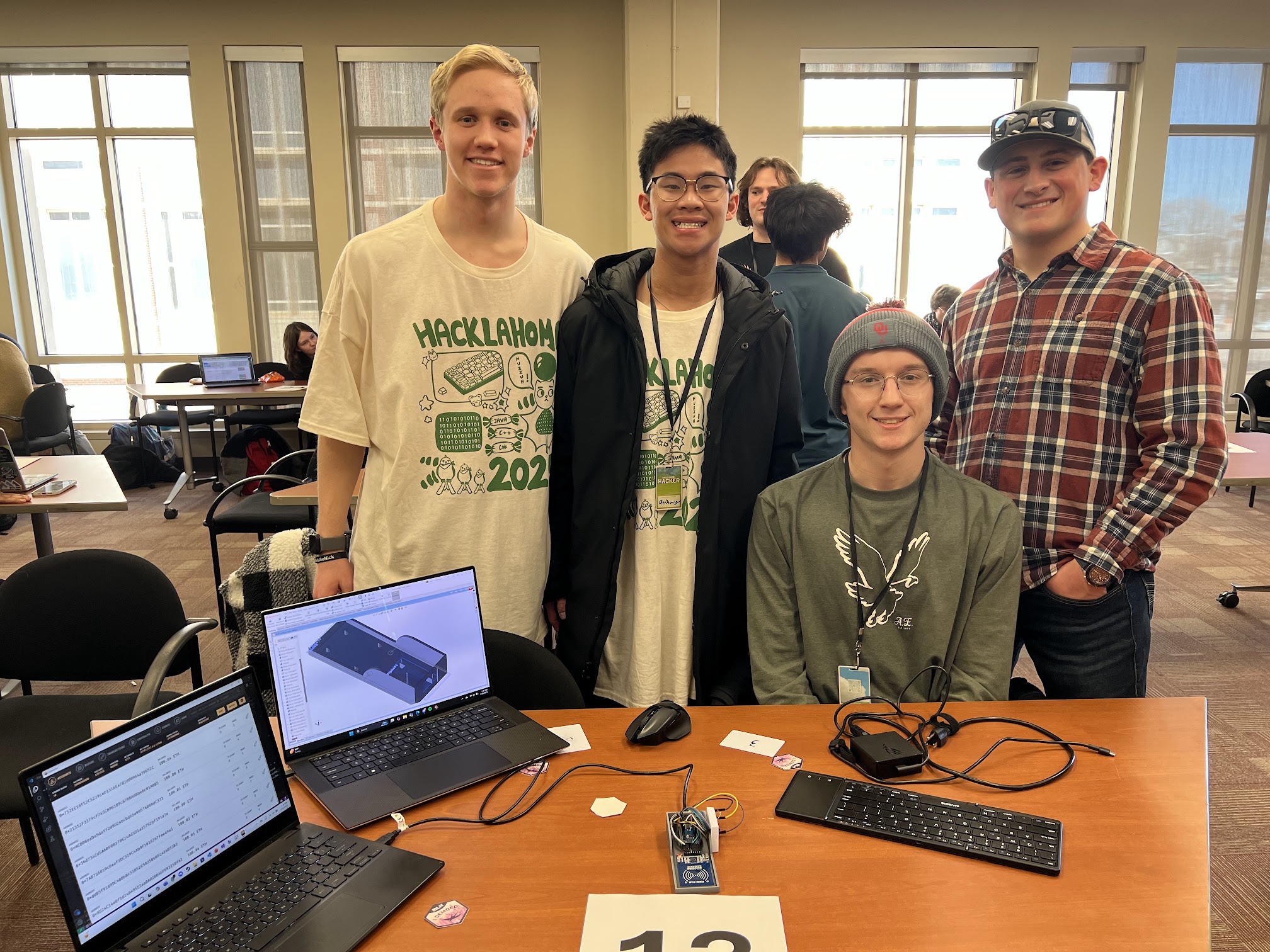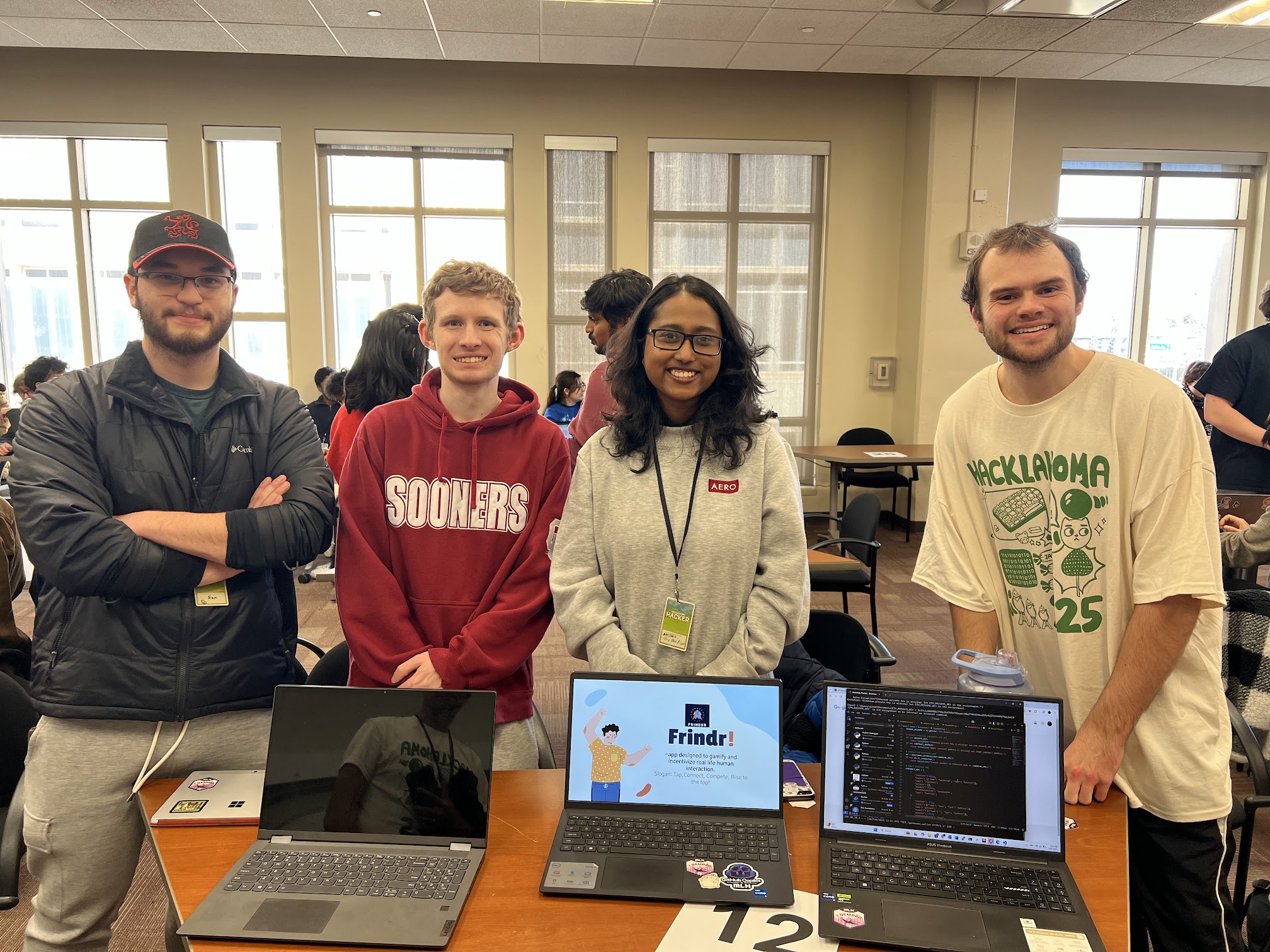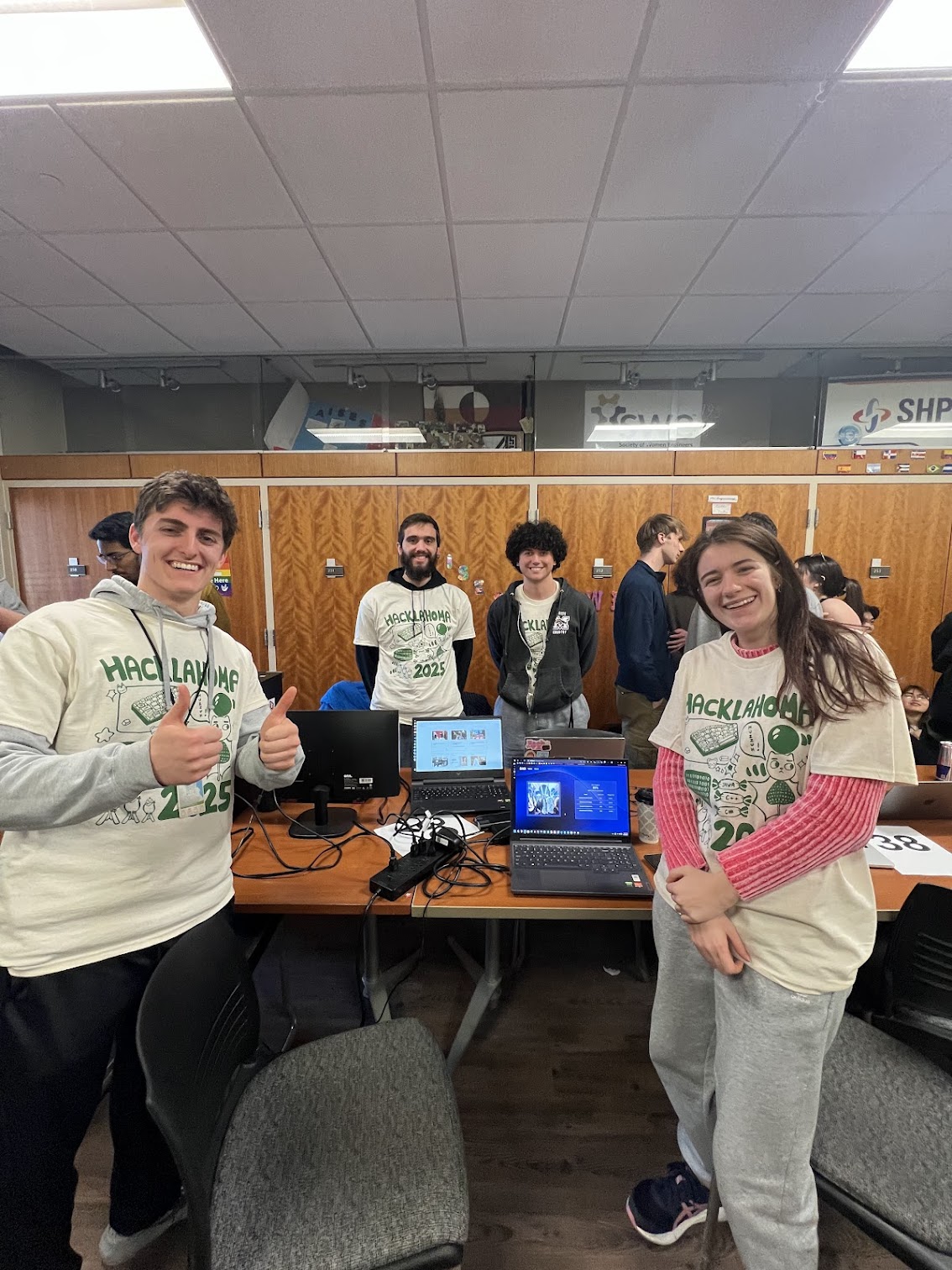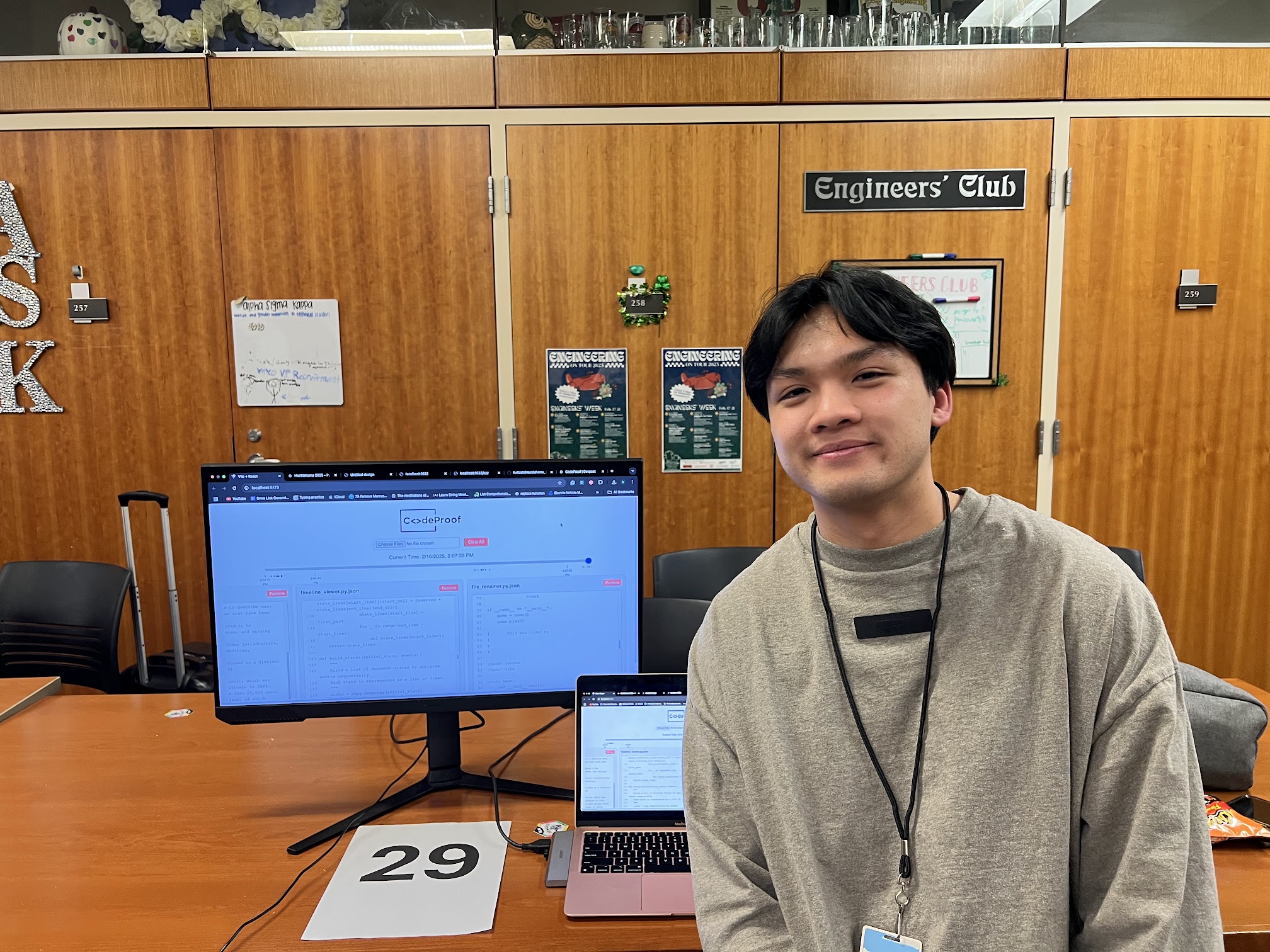Hacklahoma 2025
Built on Ethereum Track
Hacklahoma 2025, Oklahoma’s largest and student-run hackathon, brought together over 300 students and tech enthusiasts from around the region for a 24-hour coding marathon at the University of Oklahoma. One of the standout features of this year’s event was the new “Built on Ethereum” track, made possible by generous support from the Ethereum Foundation. The Foundation not only contributed a Silver-level sponsorship of $3,000 to Hacklahoma, but also funded a dedicated $1,000 prize for the best Ethereum-based project. With this backing, Hacklahoma’s organizers created an environment where participants – many brand new to blockchain – could explore decentralized applications (dApps) on Ethereum and tackle real-world problems using blockchain technology.
Ethereum Foundation Fuels web3 Innovation at Hacklahoma
The Ethereum Foundation’s support was crucial in elevating Hacklahoma 2025. As a Silver sponsor, the Foundation’s name stood alongside other major industry partners (such as Boeing and Google) in backing the event. Through its Ecosystem Support Program, the Ethereum Foundation actively provides grants and sponsorships to nurture grassroots tech communities and “support the builders of the Ethereum ecosystem”. At Hacklahoma, this translated into tangible resources for the hackers: a $3k sponsorship that helped the student organizers cover event costs, and a $1k cash prize earmarked for the “Built on Ethereum” track winner.
This sponsorship not only added a competitive spark but also reinforced the educational mission of the hackathon. “Whether you’re a total newbie or a seasoned coder, this is your chance to build something on Ethereum,” the track’s announcement encouraged. By sponsoring Hacklahoma, the Ethereum Foundation enabled students to dive into web3 and learn by building. Such support is directly in line with the Foundation’s broader mission to grow the Ethereum developer community and inspire the next generation of blockchain innovators.
Empowering First-Time Blockchain Builders
For many Hacklahoma participants, the Built on Ethereum track was their first exposure to blockchain development. Around a dozen out of the over 70 teams took up the Ethereum challenge, eager to learn how to create decentralized apps. Initially, concepts like smart contracts and crypto wallets were unfamiliar terrain for these students. But Hacklahoma’s learning-friendly setup helped demystify the technology. Organizers arranged resources and mentors to guide teams through the basics of writing smart contracts in Solidity, setting up dev environments with Hardhat, and learning why blockchains can solve unique problems.
Teams quickly went from zero to web3: some students created their first cryptocurrency wallets on the spot, while others interacted with test networks to deploy smart contracts for the very first time. Questions that popped up – “How do we connect to and pull data from the blockchain?”, “What are gas fees?” – were addressed with hands-on help from on-the-ground mentors. The track’s welcoming approach (catering to “total newbies” as much as experienced coders) meant no prior blockchain knowledge was required. This lowered the barrier to entry and empowered newcomers to experiment freely. By the end of the weekend, these first-time blockchain builders had transformed their initial curiosity into working prototypes.
Hands-On Workshops and Mentorship
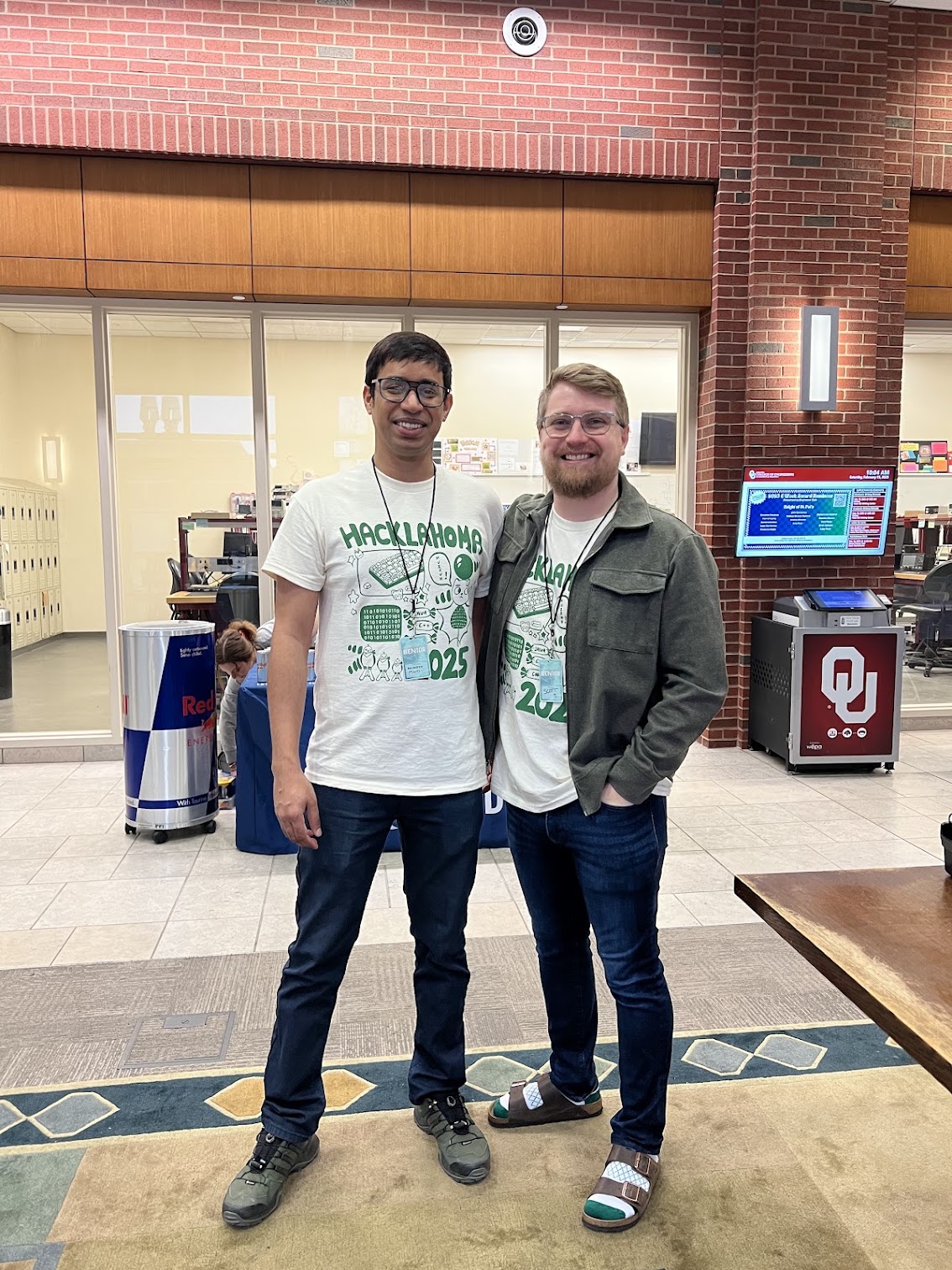
Hacklahoma 2025 wasn’t just about hacking in isolation – it also featured mentor-led workshops and dedicated mentors. In the weeks leading up to the event, organizers hosted an “Intro to web3” workshop to cover blockchain fundamentals. Led by PhD Candidate Scott Seidenberger, students set up their first Ethereum wallets and even received a special proof-of-attendance NFT for participating. This primer gave many attendees the confidence to start playing with Ethereum technology.
During the hackathon itself, a highlight was a hands-on “Building on Ethereum” workshop led by Austin Griffith, founder of the Ethereum developer community BuidlGuidl. Austin – a well-known Ethereum educator and tool builder – spent time with a room full of hackers, and his enthusiasm was contagious. In this session, he walked participants through deploying their first smart contract and shared pro-tips on using frameworks like Scaffold-ETH. “BuidlGuidl is educating Ethereum developers, creating state-of-the-art tools, and building cool things onchain,” an ethos he brought directly to Hacklahoma. Many students later remarked that Austin’s workshop was a pivotal moment where abstract concepts clicked into place. Shoutout to Austin for volunteering his time and expertise – his mentorship was invaluable in helping teams overcome hurdles and truly “buidl” on Ethereum.
Throughout the event, a dedicated crew of mentors circulated to assist teams with debugging smart contracts or refining project ideas. The mentor squad included University of Oklahoma faculty and alumni with blockchain expertise. For example, Dr. Anindya Maiti, an OU Computer Science professor who teaches a graduate course on blockchains and cryptocurrencies, was on-site as a mentor. He and others answered questions on everything from solidity security to user interface design for dApps. This strong support system ensured that even novices never stayed stuck for long – there was always someone to turn to for guidance. The collaborative atmosphere, bolstered by experts like Austin and Dr. Maiti, made the learning experience at Hacklahoma both effective and enjoyable.
Project Highlights: DAIID Wins the “Built on Ethereum” Prize
After 24 hours of intense work, teams presented an array of innovative projects that leveraged Ethereum technology for problem-solving. The creativity on display underscored how versatile blockchain can be when placed in the hands of fresh thinkers. Here are a few standout projects and winning solutions from the Built on Ethereum track:
DAIID (Distributed AI Image Detection)
DAIID was selected as the winner of the “Built on Ethereum” $1,000 prize for its innovative approach to curbing AI-generated content. Concerned about the internet’s increasing saturation with automatically produced images and text—sometimes inaccurate or misleading—the team set out to create a democratized AI-detection tool. They believe that technology should make life easier rather than harder, so DAIID’s overarching goal is to help users filter out AI spam and confidently interact with authentic media.
At its core, DAIID allows users to upload images to determine how likely they are to be AI-generated. The dApp uses the Ethereum blockchain to ensure that no single authority can manipulate or censor the results; instead, participating network nodes vote on the authenticity of each image and are incentivized to vote correctly via a proof-of-stake and reputation mechanism. Images are stored on the Interplanetary File System (IPFS), allowing anyone to independently review them and see the consensus outcome.
To build DAIID, the team used Solidity smart contracts for decentralized voting logic, React for the user-facing interface, and a Chrome extension to demonstrate how the service can filter AI content in real time. As first-time blockchain developers, they encountered challenges learning IPFS, Ethereum smart contracts, and how to architect the system for the best user experience. The group is proud to have successfully deployed a working smart contract via local Hardhat network and showcased an integrated solution connecting crypto and AI to a pressing real-world problem. Going forward, DAIID hopes to expand beyond image detection to include other types of media, empowering people to reclaim a more authentic internet experience.

Code Proof (Best Beginner)
Another standout at Hacklahoma 2025 was Code Proof, which earned the event’s “Best Beginner” award. The project’s creator drew inspiration from Grammarly’s writing analytics and the Proof of Attendance (PoA) concept, ultimately applying these ideas to code version tracking. By combining decentralized storage with Ethereum Name Service (ENS) domains, Code Proof delivers a transparent, tamper-resistant mechanism for developers to store and manage their code’s version history.
Code Proof’s core functionality revolves around using Swarm for decentralized file storage. Each coding session is linked to an ENS domain that identifies and owns the content, making it easier to discover and verify different versions. The developer built a web application with React and TypeScript, plus an extension to demonstrate how Code Proof integrates into common programming workflows. Initially planning to create an Eclipse plug-in, they pivoted to Visual Studio Code for broader compatibility, which required substantial adaptation mid-hackathon.
This was the builder’s first experience working with any blockchain technology, so diving into decentralized storage, ENS integration, and front-end development all at once was a significant challenge. Despite the steep learning curve, Code Proof effectively showcases how web3 tools can bring fresh possibilities to version control, particularly for developers who want greater transparency and security in their workflow. Moving forward, the project aims to enhance the extension’s functionality, fully develop the features they set out during the Hackathon and eventually expand support to other integrated development environments.
These projects (and many others you can find on DEVPOST) demonstrated a broad range of applications for Ethereum, from governance and identity to social media. It was remarkable to see that within just a day, teams of mostly first-time blockchain developers could deliver functioning prototypes on Ethereum. By leveraging smart contracts and the Ethereum network’s unique properties they tackled problems that traditional databases or centralized apps often struggle with. The “Built on Ethereum” track proved that given the right support and inspiration, students can quickly grasp blockchain concepts and build solutions with real-world relevance.
Looking Ahead: Join Us for Hacklahoma 2026
Hacklahoma 2025’s Ethereum track was by all measures a huge success – it introduced dozens of students to blockchain development, resulted in creative solutions to real problems, and strengthened ties between the university, the Ethereum community, and industry sponsors. The event’s outcome resonated with the goals of both the Ethereum Foundation and the University of Oklahoma: fostering innovation, education, and collaboration.
As we wrap up this year’s hackathon, the organizing team extends a heartfelt thank-you to all the sponsors, mentors, and participants who made it possible. In particular, the Ethereum Foundation’s support was instrumental in bringing the web3 dimension to Hacklahoma – we look forward to building on this partnership in the future. The energy from this event is already propelling us into planning for next year. Hacklahoma 2026 is on the horizon! Do you want to be a part of this journey? Whether you’re a student, a professional, or a sponsor, we invite you to join us next year to innovate, learn, and build together. Stay tuned for updates and mark your calendars – you can find information about upcoming events on the Hacklahoma website. Let’s continue to buidl the future, one hackathon at a time!


